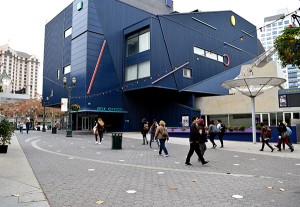On March 2 the Santa Clara Valley Transportation Authority (VTA) presented the Mineta Transportation Institute with their Community Partnership Recognition award. Specifically, VTA recognized the efforts of MTI Research associates Dr. Frances Edwards and Mr. Dan Goodrich for the expert training they provided to VTA on emergency management.
“We are recognizing the Mineta Transportation Institute for being a valued community partner,” said San José Mayor Sam Liccardo and VTA Board of Directors Vice Chairperson. “VTA reached out to MTI to educate VTA on its roles and responsibilities in the event of a wide-scale emergency or disaster. The MTI instructors brought multiple decades of emergency management and security experience to VTA and provided a depth of knowledge of the four phases of emergency management: mitigation, preparedness, response and recovery. VTA continues to partner with MTI to deliver quality emergency management education to its employees.”
Dr. Edwards, deputy director of MTI’s National Transportation Safety and Security Center, and Mr. Goodrich bring decades of experience in emergency management to their work with transportation agencies. Their most recent research, Emergency Management Training for Transportation Agencies, identifies best practices in providing training courses to adults, with a particular emphasis on the effectiveness of interactive training materials.
ABOUT THE MINETA TRANSPORTATION INSTITUTE
At the Mineta Transportation Institute (MTI) at San Jose State University (SJSU) our mission is to increase mobility for all by improving the safety, efficiency, accessibility, and convenience of our nation’s’ transportation system through research, education, workforce development and technology transfer. We help create a connected world.
MTI was founded in 1991 and is funded through the US Departments of Transportation and Homeland Security, the California Department of Transportation, and public and private grants. MTI is affiliated with SJSU’s Lucas College and Graduate School of Business.

 The unique CommUniverCity partnership received national accolades in November. I was fortunate to travel to Indianapolis with the program’s Assistant Director Katherine Cushing to receive the
The unique CommUniverCity partnership received national accolades in November. I was fortunate to travel to Indianapolis with the program’s Assistant Director Katherine Cushing to receive the
